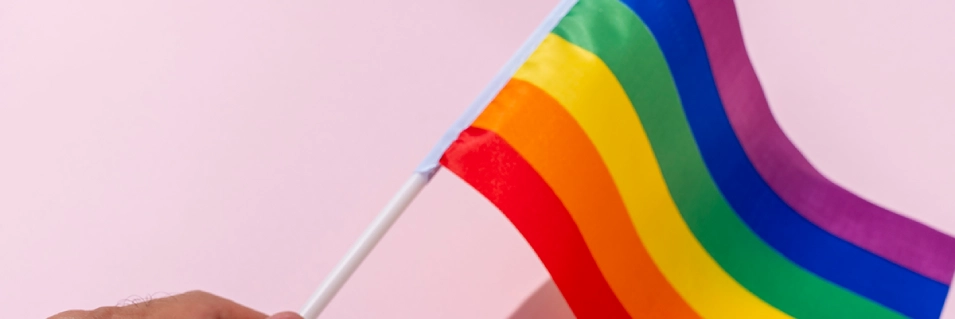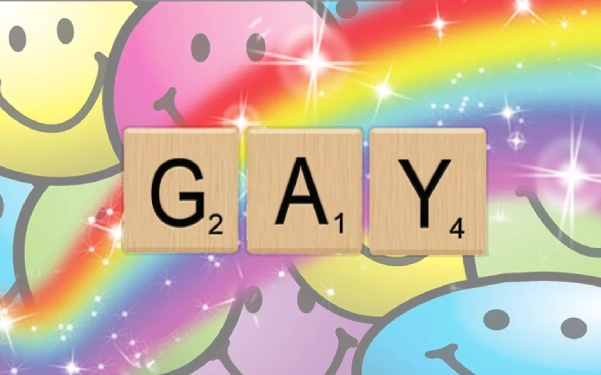
The gay flag, also known as the rainbow flag, is a symbol of the LGBTQ+ community. It consists of six colors arranged in a horizontal stripe pattern: red, orange, yellow, green, blue, and purple. Each color represents a different aspect of the LGBTQ+ community:
- Red represents life
- Orange represents healing
- Yellow represents sunlight
- Green represents nature
- Blue represents harmony
- Purple represents spirit
The rainbow flag was designed by artist and activist Gilbert Baker in 1978 in San Francisco, as a symbol of hope and pride for the LGBTQ+ community. Today, it is recognized as a universal symbol of LGBTQ+ pride and used in various events and celebrations around the world.
LGBTQ+ Movement and History of the Rainbow Flag
The LGBTQ+ movement has a rich and complex history, and the rainbow flag has become a symbol of that movement. The flag was first created in 1978 by Gilbert Baker, an artist and activist who was inspired by the need for a symbol that would represent the diversity of the LGBTQ+ community. The original flag had eight colors, each with its own meaning: pink for sex, red for life, orange for healing, yellow for sunlight, green for nature, turquoise for magic, blue for harmony, and purple for spirit.
Over time, the flag has undergone some changes. The pink and turquoise stripes were removed due to production issues, and the flag became known as the six-color flag. In 2017, a new version of the flag was introduced with additional stripes to represent people of color and the transgender community.
The LGBTQ+ movement has a long history of fighting for equality and acceptance. It has faced discrimination, violence, and persecution, but it has also achieved significant victories, such as the legalization of same-sex marriage in many countries. The rainbow flag has become a symbol of hope and pride for LGBTQ+ people around the world, and it continues to inspire new generations of activists and allies.
Meaning of Each Color in the Gay Flag
The Gay Flag, also known as the Rainbow Flag, is a symbol of the LGBTQ+ community. It was designed by artist Gilbert Baker in 1978, and it has since become a widely recognized symbol of pride and acceptance. The flag consists of six colors, each with its own meaning.
The first color on the flag is red, which symbolizes life. The color represents the life force that drives us all, and the passion and energy that fuels the LGBTQ+ community.
The second color is orange, which stands for healing. This color represents the healing power of love and acceptance, and the importance of supporting and uplifting each other.
The third color is yellow, which represents sunlight. This color symbolizes hope and optimism, and the bright future that lies ahead for the LGBTQ+ community.
The fourth color on the flag is green, which represents nature. This color represents the natural beauty of the world around us, and the importance of respecting and protecting our environment.
The fifth color is blue, which stands for harmony. This color represents the peace and unity that can be achieved when people come together with love and acceptance.
Finally, the sixth color on the Gay Flag is purple, which represents spirit. This color symbolizes the LGBTQ+ community's unique spirit and individuality, and the importance of embracing and celebrating our differences.
In conclusion, the Gay Flag is a powerful symbol of pride, acceptance, and love. Each color represents an important aspect of the LGBTQ+ community, and together they form a beautiful and meaningful symbol of unity and diversity.
How It Is Used By the LGBTQ+ Community Today
Today, the gay flag, also known as the rainbow flag, is widely recognized as a symbol of pride and unity for the LGBTQ+ community. It is often displayed at LGBTQ+ events, parades, and rallies as a way to show support for the community and its members.
The flag is also used as a way to promote inclusivity and acceptance. Many LGBTQ+ organizations and businesses incorporate the flag into their branding and marketing materials as a way to signal to potential customers or members that they are LGBTQ+ friendly.
In addition, the flag has become a way for LGBTQ+ individuals to express their identity and connect with others who share similar experiences. It has become a source of comfort and solidarity for those who may feel isolated or marginalized in their communities.
Overall, the gay flag serves as a powerful symbol of pride, unity, inclusivity, and acceptance for the LGBTQ+ community.
Continual Message of Pride & Acceptance Despite Discrimination
The gay flag, also known as the rainbow flag, represents the LGBTQ+ community's continual message of pride and acceptance despite discrimination. The flag was first created in 1978 by Gilbert Baker, a gay rights activist, as a symbol of unity and hope for the LGBTQ+ community.
The flag consists of six colors - red, orange, yellow, green, blue, and purple - each representing a different aspect of the LGBTQ+ community. Red represents life, orange represents healing, yellow represents sunlight, green represents nature, blue represents harmony, and purple represents spirit.
The flag's message of pride and acceptance is particularly important in a world where discrimination against LGBTQ+ individuals still exists. Despite significant progress in recent years, many LGBTQ+ individuals still face discrimination, harassment, and violence simply because of their sexual orientation or gender identity.
By proudly displaying the gay flag, LGBTQ+ individuals and allies send a powerful message that they will not be silenced or marginalized. The flag serves as a symbol of hope, unity, and resilience, reminding us all that love and acceptance will always triumph over hate and discrimination.
Celebrations Around Worldwide Gay Pride Month
June is celebrated as Gay Pride Month worldwide, and it's a time for the LGBTQ+ community to come together and celebrate their identities. The month of June was chosen in honor of the Stonewall riots that took place in June 1969, which sparked the modern gay rights movement. During this month, various events and parades are held to celebrate the LGBTQ+ community and to raise awareness about the issues they face.
One of the most recognizable symbols of Gay Pride Month is the rainbow flag. The flag was designed by Gilbert Baker in 1978, and it features six colors: red, orange, yellow, green, blue, and purple. Each color has its own meaning, with red representing life, orange for healing, yellow for sunlight, green for nature, blue for harmony, and purple for spirit. The rainbow flag is a symbol of diversity and inclusivity, and it's a way for the LGBTQ+ community to show their pride and unity.
During Gay Pride Month, cities around the world hold parades and events to celebrate the LGBTQ+ community. These events are a way for people to come together, show their support, and raise awareness about the issues LGBTQ+ individuals face. It's a time for celebration, but also a time to recognize the work that still needs to be done to achieve equality for all.







